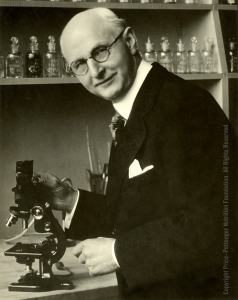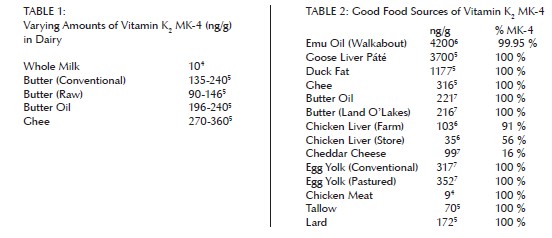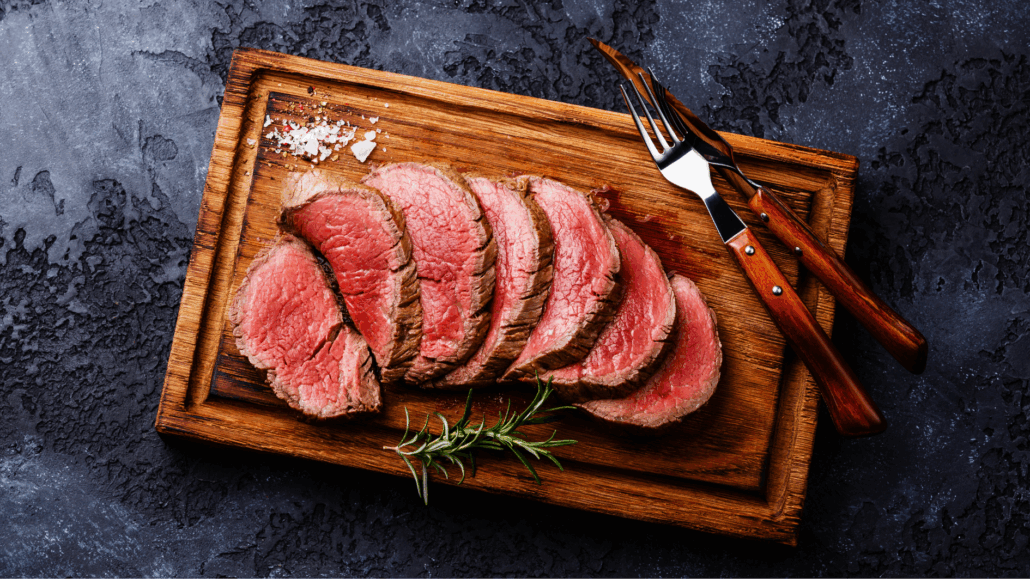We include products in articles we think are useful for our readers. If you buy products or services through links on our website, we may earn a small commission.
The Weston A. Price Diet: Traditional Wisdom for Modern Life

The Weston A. Price diet is a way to apply ancient dietary wisdom to modern life.
Dr. Weston Price (1870-1948) was a dentist who traveled to many of the most remote parts of the world to study the health and diets of traditional peoples.
His initial goal was to discover the secret to the excellent dental health of the ancient cultures he encountered. But the dietary wisdom that has become the Weston A. Price diet, can benefit the whole person.
Improved heart health, skin health, cognition, mood, and energy, along with reducing inflammation and autoimmune disorders are some of the key benefits of the Weston A. Price diet.
In this article, we’ll explore the origins of the Weston A. Price diet, along with its central principles and guidelines.
Table of Contents
Origins of the Weston A. Price Diet
From the early 1920’s to 1930’s Dr. Price traveled around the world studying the health of populations that lived and ate in traditional ways. His journeys introduced him to both Eastern and Western traditional cultures.

These included Gaelic communities in the Outer Hebrides, Native Americans in the Colorado Rockies, Indigenous tribes in South America, Polynesian Islanders, African tribes, the Aborigines of Australia, and Maori of New Zealand.
Traditional Diets and Dental Health
In each of these populations Weston Price found an absence of cavities and tooth decay, straight teeth and wide attractive smiles, and an absence of the so-called “diseases of civilization” including heart diseases, cancer, osteoporosis, diabetes, and autoimmune diseases.
He concluded that tooth decay and deformed dental arches that caused overcrowded and crooked teeth were not defects inherited from genetics, but the result of nutrition deficiencies in modern diets.

He came to this conclusion after discovering similar levels of dental disease across traditional peoples, and when compared to the modernized members of each culture.
In the table below you can see a comparison between the percentage of teeth affected by caries (cavities) in traditional vs. modernized groups:
| Traditional | Modernized (1930’s) | |
| Swiss | 4.60 | 29.8 |
| Gaelics | 1.20 | 30.0 |
| Eskimos (Inuit) | 0.09 | 13.0 |
| Native North American | 0.16 | 21.5 |
| Seminole Indians | 4.00 | 40.0 |
| Melanesians | 0.38 | 29.0 |
| Polynesians | 0.32 | 21.9 |
| Africans | 0.20 | 6.8 |
| Australian Aborigines | 0.00 | 70.9 |
| New Zealand Maori | 0.01 | 55.3 |
| Malays | 0.09 | 20.6 |
| Coastal Peruvians | 0.04 | 40.0+ |
| High Andes Indians | 0.00 | 40.0+ |
| Amazon Jungle Indians | 0.00 | 40.0+ |
Nutrients in Traditional vs. Modern Diets
To discover the secret to glowing dental health and absence of disease, Dr. Price analyzed the foods that these traditional societies ate. He found that that traditional diets provided:
- 400% more water-soluble vitamins like C, various B vitamins, along with calcium and other minerals.
- 1000% more fat-soluble vitamins from animal foods like pasture-raised dairy, ghee, tallow, lard, fish roe, oysters, organ meats, and eggs
Note that on the Weston A. Price diet, these are the same cholesterol and saturated fat rich foods that are demonized by the modern nutritional establishment.
The table below shows a more thorough breakdown of traditional vs. modern diets:
| Traditional Diet | Modern Diet |
| Abundance and variety of fat-soluble “activator” vitamins | Very few fat-soluble vitamins |
| Organ meats preferred over muscle meats | Muscle meats preferred, no organ meats |
| Fatty meat (ribeye, pork belly) preferred over lean meats | Lean meats (chicken breast, tenderloin) preferred over fatty meats |
| Natural highly saturated animal fats | Processed Partially Unsaturated (PUFA) vegetable oils |
| Pasture-raised and wild animals | Confined, factory-farmed animals |
| Raw, full-fat, and fermented dairy products | Ultra-Pasteurized low-fat dairy products |
| Bone broths | MSG, artificial flavorings, processed soups |
| Fruits from seasonal wild sources, rich soil | Industrial GMO fruit from depleted soil, consumed year-round |
| Grains and legumes soaked and/or fermented | Grains refined, and/or extruded |
| Soy foods given long fermentation, consumed in small amounts | Soy foods industrially processed, consumed in large amounts |
| Honey | Refined sweeteners |
| Lacto-fermented vegetables | Processed, pasteurized pickles |
| Lacto-fermented beverages | Modern soft drinks and high glycemic juices |
| Unrefined salt | Refined salt |
| Vitamins occurring naturally in whole foods | Synthetic vitamins taken alone or added to foods |
| Traditional cooking methods | Microwave, Irradiation |
| Traditional seeds, open pollination | Hybrid seeds, GMO seeds |
Fat-Soluble Activators in the Weston A. Price Diet
Dr. Price’s discovery of the presence and function of fat-soluble vitamins, A, D, and K2–what at the time Dr. Price called “activator x”– became the crux of the Weston A. Price diet.
Dr. Price named these vitamins “fat-soluble activators,” because they activate our body’s ability to absorb minerals and utilize proteins.
Without fat-soluble vitamins A, D, and K2, your body cannot absorb or use the vitamins and minerals we get from food, no matter the quantity we consume.
The absence of these activators in our modern diet based on lean meats, added sugar, grain flour, and vegetable oil, is likely why vitamin supplements have been routinely shown to have zero, and even negative benefits.
A 2020 review of all available studies concluded that “The results of large-scale randomized trials show that, for the majority of the population, there is no overall benefit from taking multivitamin supplements. Indeed, some studies have shown increased risk of cancers in relation to using certain vitamins.” 3
Activator X
At the time of Dr. Price’s research, he discovered that all traditional peoples consumed a nutrient that he called “activator X.”
Activator X is found in foods on the Weston Price diet including:
- fish liver
- fish eggs
- oily fish
- organ meats
- grass-fed butter
- shellfish.
Nowadays this mysterious nutrient is believed to be vitamin K2 in the form known as MK-4. This version of K2 found only in whole animal foods. Most other K2 is produced by bacterial synthesis and functions differently in the body.
Below is a table of K2 MK-4 abundant foods:

Modern science is confirming the importance attributed to K2 on the Weston A. Price diet. Science now tells us thatK2 MK-4 is quickly absorbed in the body where it’s stored in the brain, face, sternum, salivary glands, testes, pancreas, eyes, kidneys, bones, arteries, veins and other tissues.
From these regions it’s used in a function similar to a hormone–leading researchers to refer to it as both a vitamin and a hormone. K2 binds to intranuclear receptors, activating a plethora of genes and K-dependent proteins (VKDP). And it’s likely that there are other as-yet-to-be-discovered functions. 4 5
Vitamin K2 plays an important role in:
- Bone growth and density
- Facial development
- Healthy teeth
- Reproductive health
- protection against inflammation and calcification of the arteries,
- myelin synthesis
- Cognitive ability and learning capacity.
Additionally, K2 works synergistically with the other fat-soluble vitamins: Vitamins A and D signal cells to create certain proteins which are then activated by vitamin K2.
This synergy of these 3 vitamins is likely a key factor in vitamin A, D, or K2 toxicity that occurs when each is consumed alone, and in the unbalanced quantities, you get in supplements.
All three vitamins must be consumed together to avoid deficiencies and toxicity.
The importance of K2 in the Weston A. Price diet is underscored by the alarming decrease in bone health in the modern world.
A 2018 study by the Mayo Clinic found that ‘compared with 30 years ago, forearm fractures have risen more than 32% in boys and 56% in girls’. 6
At the same time, studies show strong associations between decreased bone mineral density and increased risk of heart disease.
Vitamin A
As we’ve explored above vitamin A is a vital activator in protein metabolism. But that’s only the tip of the iceberg.
Modern analysis has revealed that vitamin A is a key factor in:
- Preventing birth defects
- Infant and child development
- Production of sex and stress hormones
- Thyroid health
- Eye health
- Skin and bone health
In our modern lives there are numerous factors that deplete Vitamin A, including:
- Chronic stress,
- heavy exercise
- exposure to industrial pesticides and chemicals
- excess protein consumption from too much lean meat, low-fat dairy, and protein powders
It’s worth noting that many plant foods are advertised as containing vitamin A. Yet, these are in the form of carotenes–not a true vitamin A. Carotenes are precursors that the body has to convert into vitamin A, which we’re not very efficient at. This conversion is especially difficult for infants, people with diabetes, thyroid issues, and intestinal issues,
The takeaway: Get our vitamin A from animal sources where it’s found in bioavailable forms alongside synergetic activators.
Vitamin D in the Weston A. Price Diet
Modern science has also affirmed the vital roles that vitamin D play in our physiology, these include 7:
- absorption of calcium and phosphorus
- supporting immune function
- growth of bones and teeth
The body can synthesize the majority of the vitamin D it needs from sunshine, but this is only possible year-round for people living within 35 degree latitude lines. In America, this constitutes the South and south West of the country. Above these lines it becomes crucial to get your vitamin D from diet.
Whole foods are always the best option because of the presence of the co-activators, but supplementation is also effective.
Molecular Fertility vitamin D3 with VESIsorb® technology is a high quality vitamin D supplement option that can be up to 600% more absorbable than other options.
Pasture-Raised Animals in the Weston A. Price Diet
The traditional societies who benefited from the abundance of these fat-soluble vitamins got them mainly from wild and pasture-raised animals sources.
Studies looking at the composition of New Zealand cattle that graze year-round on fresh green grass show the superior nutrition of pastured meat.
Let’s take New Zealand beef liver as an example. When compared to factory-farmed U.S. cattle, pasture-raised beef liver offers:
- 459% more vitamin A
- 96% more vitamin B1
- 72% more iron
- 44% more vitamin B5
- 43% more vitamin B12
Natural sunlight and fresh green pasture are critical for the production of vitamin A, D, and K2 in muscle and organ meat, fat, and butterfat.
Supplements on the Weston A. Price Diet
Due to the difficulty of sourcing true pasture-raised pork, beef, dairy, and eggs, Dr. Price recommended supplementing with:
- Cod liver oil for vitamin A and D
- Butter from pasture-raised cattle for K2. He championed a type of vitamin-rich butter called “butter oil” made at low temperatures from grass-fed cows.
We recommend the VIVOMEGA fish oil supplement. It offers the highest purity standards on the market–a crucial factor now with the toxification of our oceans. It’s also sustainably harvested from wild Norwegian caught anchovy, sardine, and mackerel. It also offers 2X the concentration of standard fish oil.
Organ Meat Supplements on a Weston A. Price Diet
Though organ meat supplements didn’t exist during Weston Price’s lifetime, they’ve become a crucial part of many formulated modern diets.
You can learn more and compare bone marrow supplements, multi beef organ meat supplements, and beef liver supplements here.
Doctor Kiltz’s Nutritional Solutions offers a high-quality line of organ meat supplements harvested from grass-fed New Zealand cattle.
According to Dr. Price, traditional peoples consumed liberal amounts of these nutrient-dense superfoods to support fertility, infant development, and lactation.
While adults prized these foods to support immunity, energy, and overall well-being.
Weston A. Price’s 12 Principles of Traditional Diets
- No industrially processed foods such as white flour, refined sugar, or high fructose corn syrup, canned foods, pasteurized milk, vegetable oils (other than olive oil), protein powders, synthetic vitamins, artificial preservatives, flavors, or colorings.
- All traditional diets center on whole animal foods. These include the fat, organs and muscles of wild and ruminant animals, fish and shellfish, fowl, sea mammals, eggs, milk, reptiles, and insects.
- Traditional diets entailed eating the whole animal, nose-to-tail: muscle, organs, bones and fat, with the organ meats and fats preferred.
- The diets of healthy, nonindustrialized peoples contain at least 400% more minerals and water-soluble vitamins. And 100% more fat-soluble activator vitamins A, D, and K2.
- Though all traditional diets featured cooked food, they also ate a portion of their animal foods raw.
- Traditional diets feature foods high in enzymes and beneficial bacteria from lacto fermented dairy, meat, fruit, and vegetables.
- For traditional societies that ate seeds, grains, and nuts, they were soaked, sprouted, fermented or leavened to neutralize naturally occurring plant toxins and antinutrients like phytic acid, oxalate, phytohormones, and gluten. Without being processed out of food these antinutrients can cause mineral depletion, hormone imbalances, and even birth defects. n
- Fat accounted for 80 to 30% of calories coming mostly from animal sources. A maximum of only 4% of calories came in the form of polyunsaturated fats–mostly from grain and legumes.
- Equal amounts of omega-6 and omega-3 fatty acids.
- Salt was a feature in all traditional diets
- Animal bones are used in all traditional diets, most often in nutrient-rich bone broths.
- Traditional cultures make special efforts to ensure the health of future generations by supplying nutrient-rich animal foods for parents trying to conceive, pregnant women, and developing children. They also practiced spacing the births of children and teaching dietary ideals to their young.
Guidelines of the Weston A. Price Diet
- Eat only unprocessed, non-industrial foods.
- Animal foods like meat, organs, dairy, and eggs should come from pasture-raised animals.
- Fish and shellfish should be wild-caught and harvester from unpolluted waters.
- Dairy products should be full-fat whole foods, preferably from in raw and fermented forms like yogurt, cottage cheese, kefir etc.
- Liberally consume whole animal fats like tallow, lard, and butter.
- If consuming vegetable oils, use only traditional varieties like extra virgin olive oil, and coconut oil.
- Get at least 10,000 IU vitamin A and 1,000 IU vitamin D per day from cod liver oil.
- Soak and sprout all grains and legumes. Do not eat refined flours.
- Regularly consume lacto-fermented dairy, fruit, and vegetables.
- Regularly consume bone broths from healthy pasture-raised animals.
- Use unrefined salt along with herbs.
- For dressings use apple cider vinegar and olive oil.
- Use only small amounts of traditional sweeteners like honey and date syrup.
- Consume only small amounts of unpasteurized wine and beer.
- Use only iron, steel, or enameled cookware.
- If supplementing use only those from natural whole foods.
- Get enough sleep and do plenty of low-impact exercises like walking, yoga, and swimming
Cultivate positive thoughts like gratitude and practice forgiveness.
Weston A. Price Diet: The Takeaway
The Weston A. Price diet is a way of integrating ancestral dietary wisdom into our modern lives.
The eating patterns that Dr. Price championed came from his studies among non-industrialized people around the world. These people exhibited physical health and vitality that appears incredible when compared to the health of modern industrialized populations.
Dr. Price tracked the robust health of these traditional cultures to the foods they ate–specifically foods rich in fat-soluble activator vitamins A, D, and K2.
He found that traditional diets contained 400% more water-soluble vitamins and 1000% more fat-soluble vitamins than the Standard American Diet of his time.
With a focus on high fat and cholesterol-rich animal foods like organ meats, saturated animal fats, and full-fat dairy, the Weston A. Price diet runs contrary to the most persistent modern dietary recommendations.
Yet for the first time, modern research is baring out the truth of his observations and recommendations.
















